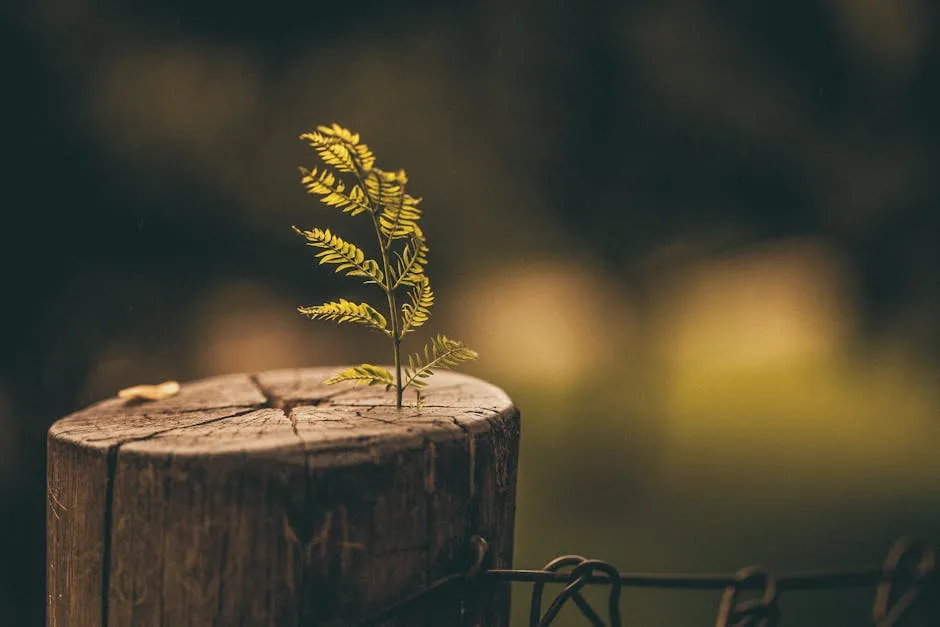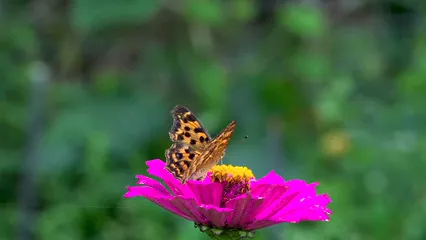

The Fascinating World of the Gumshoe Plant: Nature’s Duality
Introduction
In the vast tapestry of botanical wonders, few plants evoke as much intrigue as the gumshoe plant. This unique specimen, often overlooked in the wild, carries a dual reputation: it boasts painful thorns that can sting like a scorpion while simultaneously offering a treasure trove of medicinal properties. Is it a curse or a blessing? As you step into the world of the gumshoe plant, prepare to discover its enchanting characteristics, historical significance, and a host of benefits that might just make you reconsider your gardening choices.
The gumshoe plant, known scientifically as Grindelia robusta, is a fascinating member of the Asteraceae family. Often dubbed the “scorpion plant” due to its prickly defenses, it intrigues both amateur gardeners and seasoned botanists. Its thorns provide an effective deterrent against herbivores, ensuring its survival in the wild. However, the plant’s deceptive appearance hides its true worth, which lies in its various medicinal uses.
Historically, indigenous peoples have utilized this plant for its healing properties, making it a cornerstone of traditional medicine. From treating respiratory issues to alleviating skin conditions, the gumshoe plant has proven to be a valuable ally. Modern herbalists also recognize its potential, incorporating it into various remedies.
Speaking of remedies, if you’re venturing into the world of natural healing, you might want to check out “Herbal Remedies for Beginners: Your Guide to Natural Health” by James Wong. This book offers a hilarious yet informative dive into natural wellness, perfect for those looking to spice up their health routine!
With a unique blend of beauty and danger, the gumshoe plant offers a glimpse into nature’s complexity. Imagine strolling through a garden, discovering a plant that challenges your perceptions while offering health benefits. Its resinous nature not only attracts pollinators but also serves as a natural adhesive, making it a true multitasker in the plant kingdom.
In this blog post, we will unravel the layers of the gumshoe plant, examining its characteristics, care requirements, historical uses, and health benefits. Whether you’re a curious gardener or a health enthusiast, the gumshoe plant promises to captivate your imagination and enrich your understanding of the natural world. Buckle up for a delightful journey into the fascinating duality of the gumshoe plant, where danger meets healing in the most unexpected ways.

To enhance the biodiversity in your garden, consider learning more about how to enhance biodiversity in your garden for insect support.
Summary
The gumshoe plant, scientifically known as Grindelia robusta, embodies nature’s contradictions. Despite its thorny exterior, it is a valuable herb that has been utilized for various medicinal purposes by indigenous peoples and modern herbalists alike. From its rich nutrient content to its historical usage for treating ailments like asthma and skin conditions, the gumshoe plant holds a wealth of knowledge waiting to be explored. This article will examine its characteristics, care, ecological roles, historical context, and the myriad of health benefits it offers.
As we uncover the layers of this plant, you’ll see why it deserves a spot in your garden and your herbal medicine cabinet. Its unique properties make it not just a beautiful addition to your landscape, but also a powerful ally in health and wellness. The gumshoe plant has a storied history, from its use as a traditional remedy by Native American tribes to its modern applications in herbal medicine.
And speaking of wellness, don’t miss out on “Essential Oils for Beginners: The Guide to Getting Started with Essential Oils” by Althea Press. This book is like a secret weapon in your quest for natural wellness—it’s packed with information that won’t put you to sleep!
Join us as we dive deeper into this captivating plant, revealing its many secrets and potential uses. By the end of this exploration, you may find yourself inspired to cultivate the gumshoe plant, embracing its duality and the valuable lessons it offers about resilience and healing. This plant isn’t just a pretty face; it’s a testament to nature’s ingenuity, ready to contribute to both your garden and your health.

What is the Gumshoe Plant?
The gumshoe plant, also known as Grindelia robusta, is a quirky botanical wonder that brings a smile to any garden. Its playful nickname conjures amusing images of a detective’s sticky shoe, forever leaving traces behind. This plant’s unique charm lies in its sticky resin, which is not only fun to touch but also serves many practical purposes.
Scientifically classified as Grindelia robusta, this plant belongs to the Asteraceae family, which includes sunflowers and daisies. This classification connects the gumshoe plant to a diverse group of flowering plants, known for their vibrant blooms and ecological importance. The gumshoe plant itself is a delightful specimen that showcases nature’s creativity.
Native to the western United States, the gumshoe plant thrives in various environments, from sandy plains to rocky hillsides. Its adaptability is remarkable, allowing it to flourish in areas where other plants might struggle. Whether in full sun or partial shade, this resilient plant finds a way to thrive. With its presence in open fields, roadsides, and disturbed sites, the gumshoe plant plays a vital role in its ecosystem.
While you’re at it, consider adding a Bee Hotel for Pollinators to your garden. It’s a fantastic way to support our buzzing friends while enhancing the biodiversity around your gumshoe plant!
The gumshoe plant’s ability to withstand harsh conditions makes it a beloved choice among gardeners seeking low-maintenance options. Its sticky resin not only protects it from herbivores but also attracts beneficial pollinators like bees and butterflies. This duality of defense and attraction highlights the gumshoe plant’s significance in promoting biodiversity.
Overall, the gumshoe plant is a fascinating specimen that combines resilience, charm, and ecological value. Its playful nickname and unique characteristics make it a delightful addition to any garden, reminding us that nature often holds surprises that are both amusing and beneficial.

Characteristics of the Gumshoe Plant
Appearance
The gumshoe plant is a sight to behold. Growing up to three feet tall, it boasts a sturdy structure with thick, branching stems. Its leaves are green, lance-shaped, and slightly sticky due to the resin they produce. This sticky quality not only adds to the plant’s charm but also serves a significant purpose in its survival.
One of the most striking features of the gumshoe plant is its daisy-like flowers. These vibrant blooms showcase bright yellow petals surrounding a central disc, known for attracting various pollinators. The flower heads are composite, consisting of both ray and disc flowers, a characteristic typical of the sunflower family. The overall appearance is both rugged and beautiful, making it a unique addition to any garden.
By the way, if you’re interested in creating a beautiful garden space, consider investing in a Gardening Tool Set. Having the right tools makes all the difference when tending to your gumshoe plant and other green buddies!
The gumshoe plant’s thorns are another interesting aspect. Though not the most welcoming feature, these thorns serve as a defense mechanism against herbivores. They can inflict pain when touched, effectively deterring animals from munching on the plant. This thorny exterior protects the plant while adding an element of intrigue to its personality.

Resinous Nature
The gumshoe plant is well-known for its sticky resin. This resin plays several ecological roles, including protecting the plant from herbivores. When animals attempt to nibble on the leaves or flowers, the resin can create an unpleasant experience, encouraging them to seek tastier alternatives.
Historically, indigenous peoples have utilized this resin for its medicinal properties. It has been used in traditional remedies for various ailments, showcasing the plant’s versatility. The resin is also known for its antiseptic qualities, making it effective in treating minor wounds and infections.
In addition to its defensive functions, the resin has practical applications in modern herbalism. Many herbalists appreciate the gumshoe plant’s resin for its anti-inflammatory properties, using it in topical preparations for skin conditions. From treating rashes to soothing irritation, the gumshoe plant’s resin is a valuable asset.
While we’re on the topic of herbalism, if you’re keen to dive deeper into the craft, consider picking up “The Herbal Medicine-Maker’s Handbook: A Home Manual” by James Green. It’s a fantastic guide to help you master the art of herbal remedies!
Overall, the gumshoe plant’s characteristics make it a fascinating study in nature’s ingenuity. Its defensive thorns, stunning flowers, and sticky resin all contribute to its ecological significance and appeal. With its unique adaptations, the gumshoe plant truly stands out in the world of botany, offering both beauty and utility.

Gumshoe Plant Care
Growing Conditions
To cultivate a thriving gumshoe plant, understanding its optimal growing conditions is key. This unique plant loves sunlight, so aim for a spot that receives about one to three hours of direct light daily. Too much sun, however, can be a bit too hot to handle. A little shade can work wonders, especially during the peak afternoon hours.
When it comes to soil, gumshoe plants are as adaptable as they come. They thrive in well-drained soils, whether sandy or rocky. A little drainage goes a long way in preventing root rot, which is the last thing you want for your plant. If you’re planting in a pot, a container with a drainage hole is non-negotiable.
Watering and Pruning Tips
Watering is an art form with the gumshoe plant. Aim to water it about once a week, ensuring the soil remains moist but not soggy. These plants are quite drought-resistant, so don’t fall into the trap of overwatering. Let the top inch of soil dry out before giving it another drink.
Pruning is essential for keeping your gumshoe plant in tip-top shape. Regularly check for any dead or unhealthy parts. Snipping these away encourages new growth and helps the plant maintain a pleasing shape. Just think of it as giving your plant a little haircut!
Speaking of keeping things neat, consider getting a pair of pruning shears. They are essential for keeping your gumshoe plant and other garden favorites looking fabulous!
In summary, the gumshoe plant thrives in sunlight with well-drained soil. Water weekly, and don’t forget to prune for a healthy, vibrant specimen. With these care tips, your gumshoe plant will flourish beautifully, adding character to your garden space.

Historical Context and Cultural Uses
Indigenous Uses
The gumshoe plant has a rich history rooted in the traditions of Native American tribes. These communities recognized its medicinal potential long before modern herbalism took notice. The plant’s leaves and resin were used in various remedies, particularly for respiratory issues. Imagine the wisdom of ancient herbalists, crafting tinctures and teas to alleviate coughs and bronchial problems.
Historical Significance
As European settlers arrived, they too recognized the gumshoe plant’s value. Its medicinal properties made it a staple in early herbal practices. Settlers adapted indigenous knowledge, using the plant in similar ways for treating ailments. The gumshoe plant became a bridge between cultures, illustrating how nature connects us all.
In addition to its medicinal uses, the gumshoe plant has a historical significance as a food source. During harsh winters, it provided crucial nutrition when other vegetables were scarce. Cooked as a vegetable, it was a source of warmth and sustenance, demonstrating the plant’s versatility.
Modern Applications
Fast forward to today, and the gumshoe plant remains relevant in modern herbalism. Its leaves and resin are used in teas, tinctures, and topical applications. Herbalists appreciate its anti-inflammatory and antiseptic properties, making it a go-to for treating skin irritations and respiratory issues.
Moreover, the gumshoe plant has found its way into contemporary wellness circles. Whether in herbal remedies or natural skincare products, its benefits are being rediscovered by a new generation. The plant’s journey from indigenous wisdom to modern applications is a testament to its enduring relevance.
In conclusion, the gumshoe plant boasts a fascinating historical context and a legacy that spans cultures. From indigenous medicinal practices to modern herbalism, its uses have evolved while retaining their core essence. The gumshoe plant stands as a reminder of nature’s gifts and the importance of preserving traditional knowledge.

Health Benefits of the Gumshoe Plant
The gumshoe plant, or Grindelia robusta, is not just another prickly shrub—it’s a powerhouse of health benefits! Let’s break down its medicinal properties and nutritional value, revealing why this plant deserves a spot in your herbal arsenal.
Medicinal Properties
Respiratory Health: The gumshoe plant shines when it comes to respiratory issues. Its leaves and resin contain compounds that act as expectorants, helping to clear mucus from your airways. This makes it a valuable ally for those suffering from asthma and bronchitis. Imagine breathing easier and feeling relief during a coughing fit—thanks to this unassuming plant. Traditional uses often involve brewing the leaves into teas or tinctures that soothe irritation and promote lung health.
Skin Treatments: If you have sensitive skin, the gumshoe plant can be a game changer. Its resin possesses anti-inflammatory and antimicrobial properties, making it effective in treating skin conditions like dermatitis and rashes. By applying its resin topically, you can alleviate redness and irritation. Just think of it as nature’s soothing balm! Many cultures have used it for centuries, proving that sometimes the best remedies are found right in your backyard.
And while you’re considering natural treatments, you might want to explore natural skin care products that harness the power of herbal remedies, just like the gumshoe plant!
Pain Relief: Stiff joints or muscle soreness? You might want to reach for gumshoe plant resin. Known for its mild analgesic properties, it can ease pain and inflammation when used topically. This makes it popular for treating minor injuries, sprains, or even arthritis. Mixing the resin with a carrier oil creates a natural pain relief solution that doesn’t involve chemicals or side effects.

Nutritional Value
Vitamins and Minerals: The gumshoe plant isn’t just about its medicinal prowess; it also packs a nutritional punch. Rich in Vitamin C, it can bolster your immune system and help combat fatigue. This vitamin is crucial for overall health, aiding in collagen production and keeping your skin glowing. Its presence in traditional diets highlights its value as both a food source and a medicinal herb. Consuming the leaves, whether cooked or in tinctures, can provide essential nutrients while also reaping the plant’s health benefits.
In conclusion, the gumshoe plant is more than a thorny specimen; it’s a versatile herb with significant health benefits. From respiratory relief to skin treatments and pain management, this plant is a treasure waiting to be explored. Whether you’re a seasoned herbalist or simply curious about natural remedies, the gumshoe plant deserves your attention!

Ecological Significance
The gumshoe plant also plays a vital role in our ecosystems, supporting biodiversity and contributing to habitat restoration.
Role in the Ecosystem
Pollinator Support: The gumshoe plant is a magnet for pollinators! Its bright yellow flowers attract bees, butterflies, and other essential insects. By providing a food source, it helps maintain healthy bee populations, which are crucial for pollinating many of our crops. This plant serves as a stepping stone in the food web, supporting not just pollinators but also the larger ecosystem.
Habitat Restoration: Due to its resilience, the gumshoe plant is often used in ecological restoration projects. Its ability to thrive in disturbed areas allows it to stabilize soils and prevent erosion. When planted in degraded landscapes, it helps pave the way for other species to flourish, fostering a diverse and balanced ecosystem. The gumshoe plant is not just surviving; it’s helping other plants thrive too!
And if you’re looking for ways to further enhance your garden’s ecological impact, consider adding a compost bin. It’s a fantastic way to recycle kitchen scraps and improve your garden’s soil health!
Embracing the gumshoe plant means recognizing its critical role in both health and our environment. Whether you’re planting it in your garden or utilizing its medicinal properties, you’re participating in a cycle of growth and sustainability.

Conclusion
The gumshoe plant is a remarkable example of nature’s duality, embodying both beauty and danger. Its thorny exterior may deter the unwary, yet the benefits it brings to traditional and modern medicine are truly astounding. This plant is not just a pretty face; it’s a treasure trove of healing properties that have been cherished through generations. As we cultivate an appreciation for such botanical wonders, we enrich our gardens and preserve age-old knowledge.
Embracing the gumshoe plant can spark a newfound passion for herbal remedies and sustainable gardening. Imagine wandering through your garden, where this prickly beauty stands tall, inviting you to uncover its secrets. Every thorn tells a story—a story of resilience, history, and healing. For those willing to look beyond its sharp defenses, the gumshoe plant offers a bounty of health benefits, from respiratory relief to skin treatment.
As our understanding of herbal medicine grows, so does our appreciation for plants like the gumshoe. We learn not only about their physical attributes but also their cultural significance and the wisdom of those who came before us. By incorporating the gumshoe plant into our gardens, we join a long lineage of enthusiasts who have recognized the importance of this unique species.
So, whether you’re an aspiring herbalist or a curious gardener, consider adding the gumshoe plant to your collection. Its striking appearance and myriad benefits make it a worthy addition. In a world that often overlooks the simple beauty of nature, the gumshoe plant is a reminder that sometimes, the most fascinating treasures are hidden just beneath the surface.
FAQs
Can the gumshoe plant be eaten?
Yes! The leaves of the gumshoe plant are edible. Indigenous peoples often cooked the leaves as a vegetable. It’s said to purify the blood and provide warmth during winter months, making it a valuable addition to traditional diets.
Is it safe to grow indoors?
Growing the gumshoe plant indoors isn’t advisable. Its painful thorns can pose risks, especially around curious children or pets. Better to let it thrive outdoors where it can flourish safely.
What are the best conditions for growing a gumshoe plant?
The gumshoe plant loves direct sunlight! It thrives in well-drained soil, whether sandy or rocky. Water it weekly, ensuring the soil stays moist but not soggy. A little pruning goes a long way in keeping it healthy.
Are there any side effects of using gumshoe plant for medicinal purposes?
While generally safe, some individuals may experience skin irritation from the resin. Always conduct a patch test before applying it topically. Consulting a healthcare professional is wise if you’re considering medicinal use.
Please let us know what you think about our content by leaving a comment down below!
Thank you for reading till here 🙂
All images from Pexels



